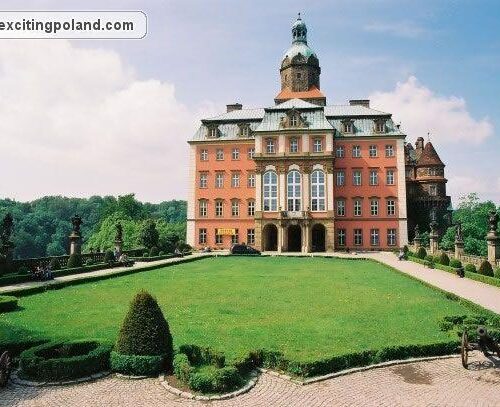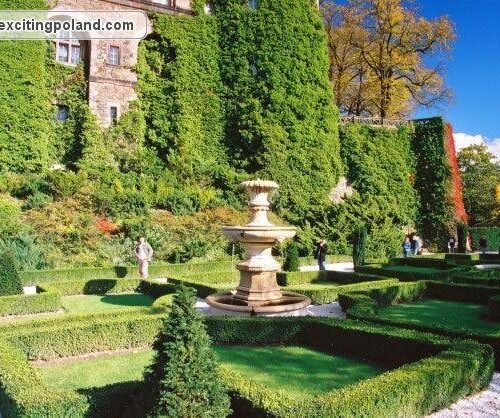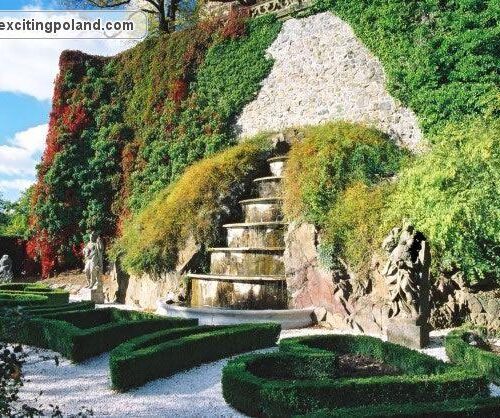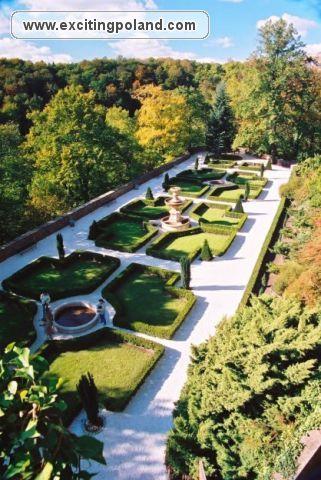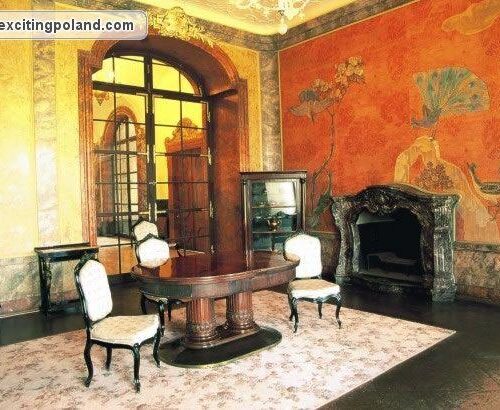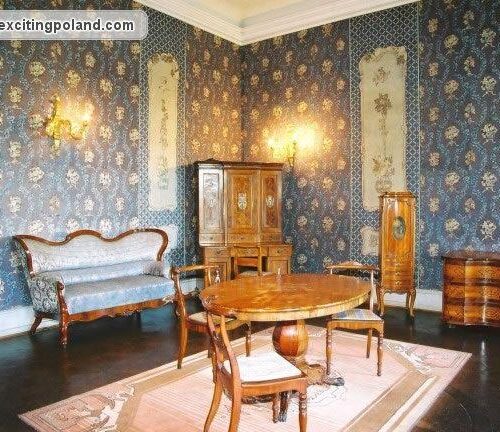Ksiaz is situated in the south-west Poland, very close to Walbrzych. The place to see in Ksiaz is the castle – the biggest in Silesia, and the third largest in Poland. It was constructed between 1288 and 1291, and was built by the Silesian Piast Prince Bolko I. It sits on a huge cape, surrounded on three sides by the dark valley of Pelcznica river.
During World War II the castle was confiscated and transformed into a bunker by the Germans. Supposedly, it was meant to be the most magnificent of Hitler’s headquarters. Shelters and tunnels were constructed underneath. But after Hitler’s defeat it was taken over by the Soviets. By that time it was completely robbed of all the valuables. Later the castle has been totally forgotten. Finally, the authorities set up the idea of restoring the historic building. They turned it into a museum, but you can find there a restaurant, an art gallery and a hotel as well.
While visiting the castle you should take a tour to see the main tower. The walk at the top is often compared to a journey into the past. It shows the whole history of Ksiaz – Gothic elements are combined with Soviet graffiti. At the top you can have a look at the surroundings – deep forests in the valley of Pelcznica river.
Of the interiors, an absolute must-see, is the Maximilian Hall. As the whole eastern wing, this part was constructed in the 18th century. The Maximilian Hall is the largest room in the whole castle, and is decorated in a Baroque style. You can admire a beautiful interior, among which you should draw your attention to magnificent mirrors, antique chimneypiece, gilded chandeliers, and huge windows with a splendid view. Painted ceiling is a fresco of Mount Parnassus.
You should also see the terraced gardens, that are situated on the slopes around the castle. There are few of them, each one on a different level. They are a great place to have a rest after visiting the interiors. You can sit beside one of the fountains or admire various plant compositions. Near the castle there is a stud farm, where castle stables were situated.

